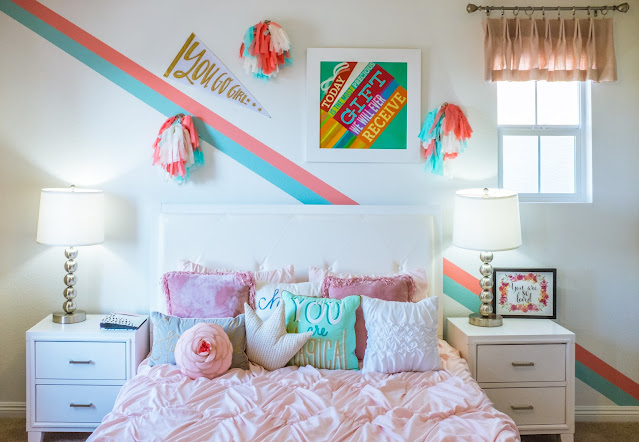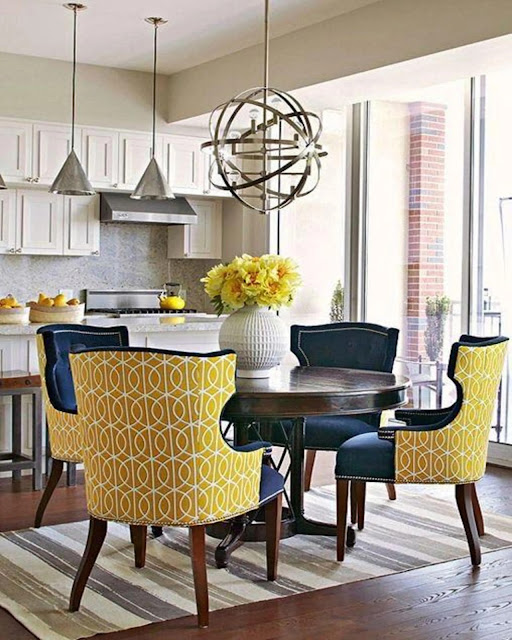Teenage Room Interior Design: Creating a Stylish and Functional Space
Designing a teenage room is a unique and exciting challenge. Adolescents are on the cusp of adulthood, and their rooms should reflect their evolving tastes, needs, and personalities. A well-designed teenage room is more than just a place to sleep; it's a sanctuary for self-expression, a space for studying, socializing, and retreating. In this comprehensive guide, we will delve into the world of teenage room interior design, exploring the key principles, styles, and creative ideas to create a stylish and functional space that both teenagers and parents will love.
Chapter 1: Understanding Teenagers' Needs
Before diving into design concepts, it's essential to understand the specific needs and preferences of teenagers:
- Privacy and Independence: Teenagers crave independence and value their privacy. Their rooms should provide a sense of personal space.
- Study and Focus: With academic demands increasing, a designated study area with proper lighting and organization is crucial.
- Social Space: Teenagers often enjoy spending time with friends. Consider creating a comfortable and inviting area for socializing.
- Personality and Self-Expression: Teenagers are in the process of discovering their identities. Their rooms should reflect their unique personalities and interests.
Chapter 2: Choosing the Right Colors
Color selection sets the tone for the room and can greatly influence the ambiance:
- Neutral Base: Start with neutral colors for the walls and larger furniture pieces. These provide flexibility and can be easily updated.
- Accent Colors: Add pops of color through bedding, accessories, and decor items to infuse personality and style.
- Personalization: Involve the teenager in choosing their room's color palette to ensure it reflects their taste and preferences.
Chapter 3: Furniture and Layout
Selecting the right furniture and arranging it effectively is essential:
- Functional Furniture: Choose multifunctional furniture that maximizes space, such as a loft bed with a desk or a daybed with storage drawers.
- Ergonomics: Prioritize ergonomic elements in the room, including a comfortable chair for studying and proper lighting for reading and working.
- Customization: Look for customizable furniture options that allow the teenager to express their style, from choosing fabrics for upholstery to selecting finishes.
- Layout: Arrange furniture to create distinct zones for sleeping, studying, and socializing. Ensure there is adequate circulation space.
Chapter 4: Design Styles for Teenagers
Teenagers often have strong preferences for design styles. Consider the following:
- Minimalist: Clean lines and simplicity can create a modern, uncluttered space. Minimalist design is excellent for promoting focus and organization.
- Bohemian: Eclectic, colorful, and filled with personal artifacts, the bohemian style is perfect for teens with a love for art and travel.
- Scandinavian: Scandinavian design emphasizes functionality and simplicity with a touch of warmth. It's ideal for creating a cozy and clutter-free atmosphere.
- Industrial: Raw materials, metal accents, and urban vibes characterize industrial design, which can be particularly appealing to teenagers who enjoy a more urban aesthetic.
- Vintage: Incorporate vintage furniture and decor pieces for a room with character and nostalgia.
Chapter 5: Personalization and Decor
Decor elements help teenagers express their personalities:
- Wall Art: Encourage the use of wall art, posters, or framed photos that resonate with the teenager's interests and passions.
- Bulletin Boards: Use bulletin boards or corkboards for displaying mementos, artwork, and reminders.
- Gallery Wall: Create a gallery wall with a mix of artwork, photos, and inspirational quotes for a personal touch.
- Textiles: Incorporate textiles like curtains, rugs, and throw pillows that complement the room's color scheme and style.
Chapter 6: Storage Solutions
Efficient storage is essential for keeping the room organized:
- Under-Bed Storage: Utilize the space under the bed for drawers or bins to store clothes, shoes, or belongings.
- Shelving: Install wall shelves or floating shelves to display books, collectibles, and decorative items.
- Closet Organization: Optimize closet space with organizers, shelves, and hangers to keep clothing and accessories tidy.
- Desk Organization: Provide storage solutions on the desk, such as pencil cups and file organizers, to keep school supplies in order.
Chapter 7: Technology Integration
Teenagers often have technology-related needs in their rooms:
- Charging Stations: Create dedicated charging stations for laptops, tablets, and phones to keep cables organized and devices charged.
- Desk Accessories: Invest in proper lighting and ergonomic desk accessories for comfortable and efficient computer use.
- Entertainment Center: Incorporate a TV, gaming console, or entertainment system if desired, ensuring appropriate storage for media and equipment.
Chapter 8: Personal Space and Privacy
Teenagers appreciate having their own personal space and privacy:
- Room Dividers: For shared spaces, consider room dividers or curtains to create separate zones.
- Privacy Screens: Provide privacy screens for studying or changing, especially in shared bedrooms.
- Lockable Storage: Some teenagers may appreciate lockable storage options for personal belongings.
Chapter 9: Transitioning and Future-Proofing
Designing a teenage room is not just about the present; it's also about planning for the future:
- Versatile Furniture: Invest in furniture that can adapt as the teenager's needs change, such as a desk that can serve as a workspace or vanity.
- Timeless Elements: Incorporate timeless design elements that can easily transition into an adult bedroom.
- Flexibility: Allow for flexibility in decor and layout so that the room can evolve with the teenager's changing preferences.
Conclusion
Designing a teenage room is a collaborative journey that involves balancing style, functionality, and personal expression. It's a space where creativity is nurtured, independence is respected, and individuality is celebrated. A well-designed teenage room is not just a reflection of the teenager's personality; it's a haven for growth, learning, and self-discovery. It's where friendships are forged, dreams are nurtured, and memories are created. In the world of teenage room interior design, the possibilities are as endless as a teenager's dreams, and the results are nothing short of extraordinary.


Comments
Post a Comment